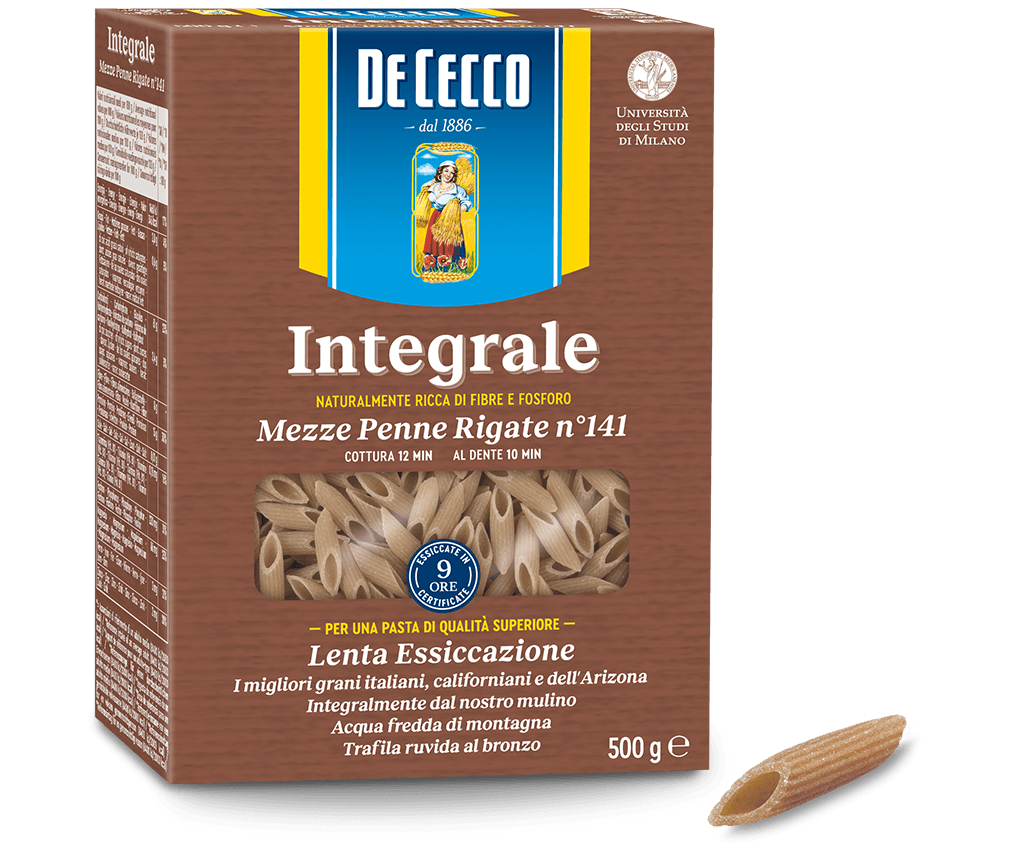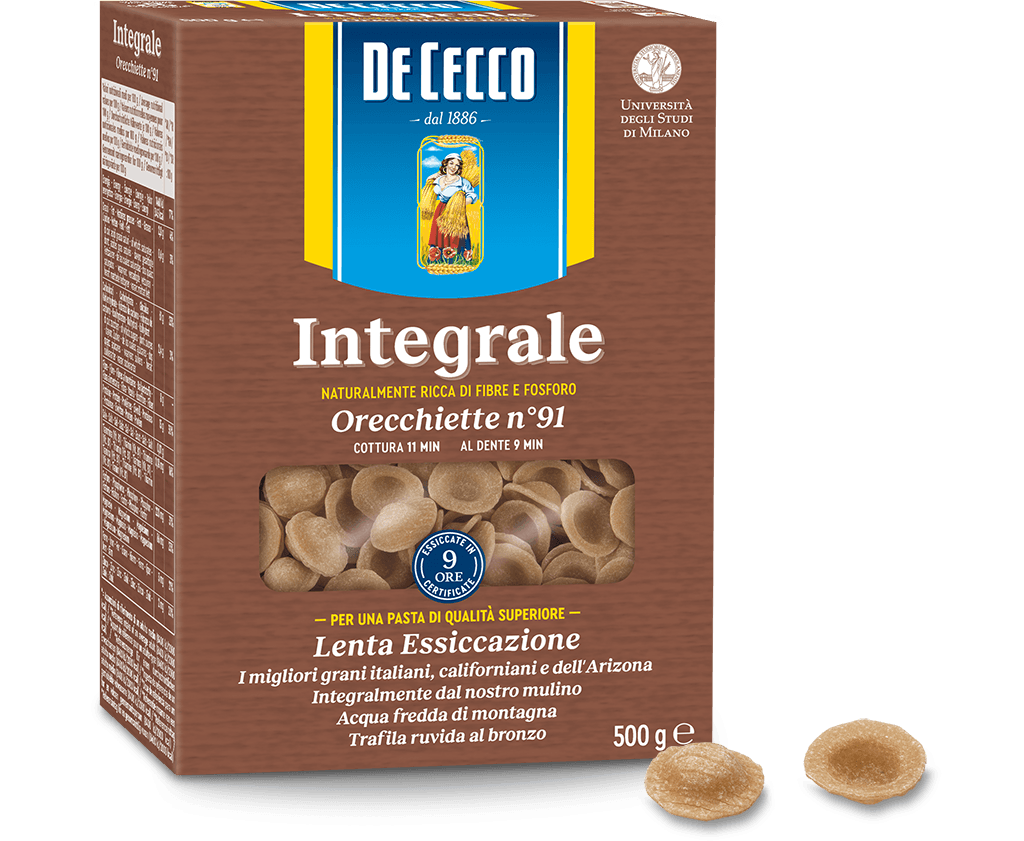Orecchiette n° 91 Integrali
Orecchiette (little ears), also known as "strascicati", are a typical pasta shape from the Apulia culinary tradition. The shape is a round disc with a slight indent in the centre.
In the culinary tradition of Apulia of home-made pasta, orecchiette were made with white flour, durum wheat semolina and water. After the pasta dough had been cut into small pieces, it was "dragged" ("strascicati" in Italian) with the tip of a knife to create a sort of small shell, then pulled back with the tip of the thumb.
In traditional Apulia cooking, orecchiette are cooked in boiling water with broccoli or potatoes and served with a tomato sauce and sheep's cheese, or with garlic and Oil
This pasta is also known as "Recchie" and is served with vegetable ragù, or lamb and ricotta ragù.
Available in 500g pack.
- Cooking time: 11 min - Al dente: 9 min
Our method
Attention, care, experience, quality at every stage: from our mill to your table.
Mezze Penne Rigate n° 141 Integrali
Mezze Penne Rigate belong to the family of Penne, but differ as they are slightly shorter.
In Italian, the term "Penne" refers to the goose feather which was used historically to write with and was cut on a diagonal to achieve a really thin tip. The shape, obtained from a pasta tube, can be smooth or ridged, of varying length and has the typical diagonal cut of a quill.
Penne are one of the few types of pasta for which there is an exact date when it was created. Indeed, in 1865, a pasta-maker from San Martino d'Albaro (Genoa), Giovanni Battista Capurro, requested and obtained a patent for a diagonal cutting machine. The patent was important because it meant the fresh pasta could be cut like a quill without crushing it and in different lengths from 3 to 5 centimetres (mezze "half" penne or penne). The document preserved in the Central Archive of the State of Rome reads: "Up until now, a diagonal cut could only be made by hand with a pair of scissors which, in addition to being slow and time-consuming, also resulted in an irregular cut which flattened the pasta".
The smaller-sized Mezze Penne Rigate are perfect for stirring up together with creamy sauces, both red ones made with tomatoes or white ones made with cheese, or with classic vegetable soups to be eaten with a spoon.
Available in 500g and 3 Kg packs.






